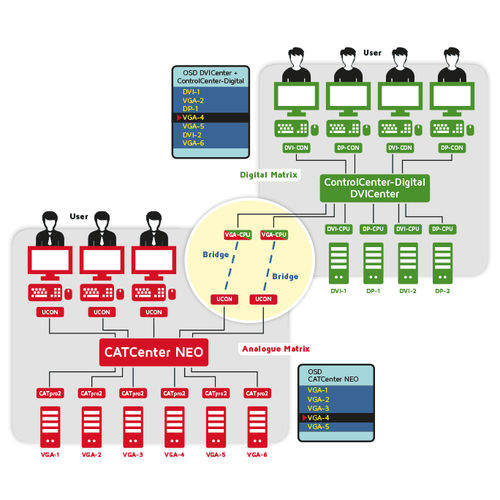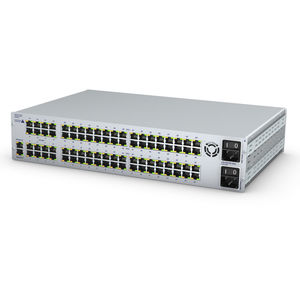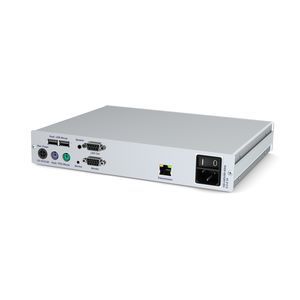
- Robotics - Automation - Industrial IT
- Industrial Software
- Management software
- Guntermann & Drunck
Network access management software Bridgeindustrialreal-timeWindows
Add to favorites
Compare this product
Characteristics
- Function
- network access management
- Applications
- industrial
- Type
- real-time
- Operating system
- Windows
Description
To be able to continue using VGA-based KVM matrix systems and to integrate digital state-of-the-art solutions, G&D developed the Bridge function.
With the function, users can integrate CATCenter NEO clusters into digital matrix switch systems (ControlCenter-Digital or DVICenter) and operate the entire system over single one user inteIn the world of computers, the analog video signal VGA has been playing a leading role for more than two decades. Any resolutions based on VGA were optimised for CRT displays. After the introduction of LCD displays, the analogue signal had to be converted into a digital signal.
Following VGA, the digital DVI signal didn’t need to be converted and allows for much higher resolutions than VGA. Changing signal standards within the world of computers, however, can cause immensely high follow-up costs.
KVM outlives generations of signals
Our analogue KVM matrix systems run for years since they are known for being robust, solid and reliable. Therefore, it wouldn’t be wise to replace a system while its return on investment is still active, not to mention the effort required for a new installation. Yet, there has to be a way to integrate up-to-date, DVI-based computers into KVM systems.
G&D products survive a generational change of signals unscathed. To be able to continue using VGA-based KVM matrix systems and to integrate digital state-of-the-art solutions, we now provide their customers with the new Bridge function. The function figuratively bridges the gap between and unites existing analogue and digital matrix systems.
Catalogs
*Prices are pre-tax. They exclude delivery charges and customs duties and do not include additional charges for installation or activation options. Prices are indicative only and may vary by country, with changes to the cost of raw materials and exchange rates.







